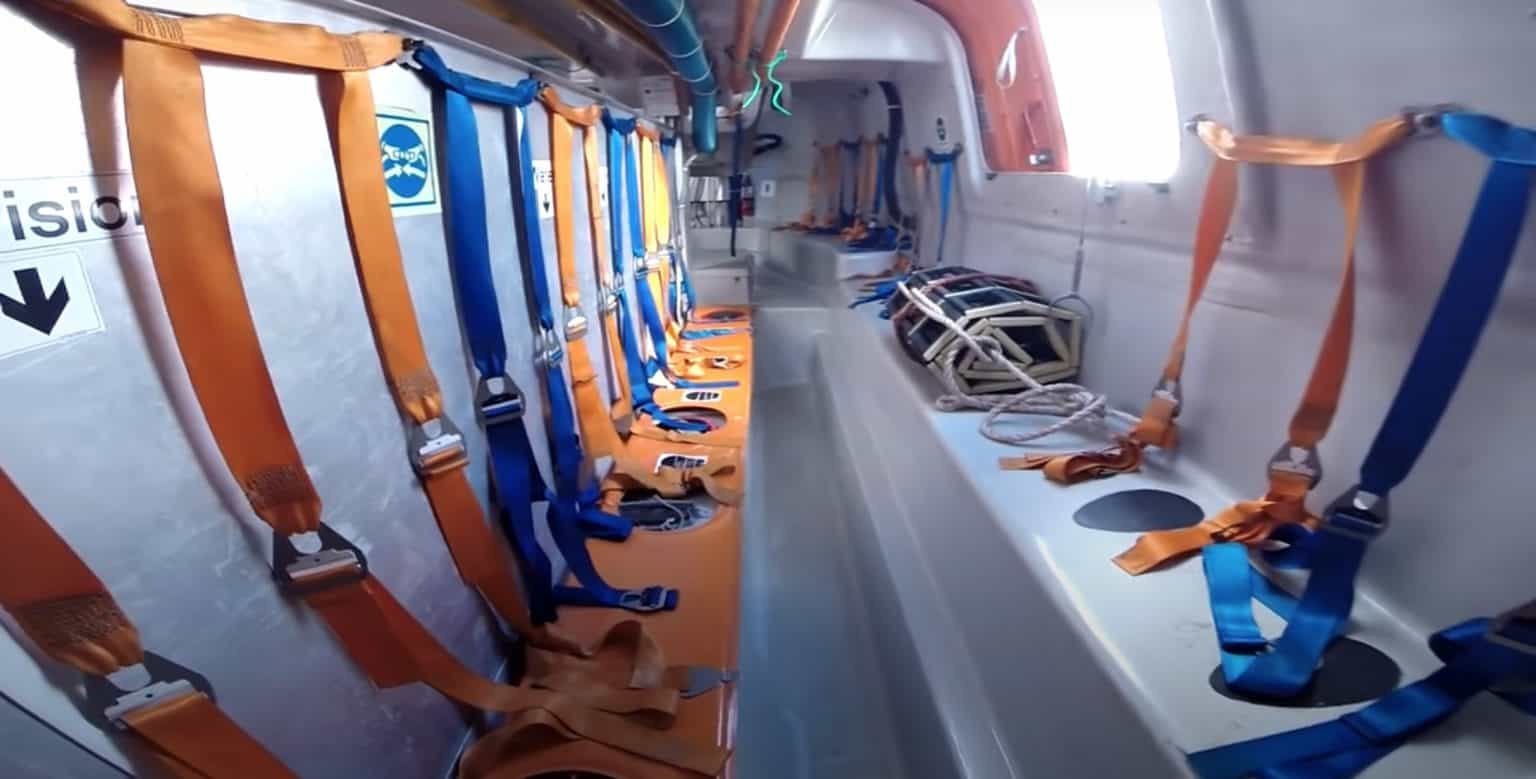Table Of Content
- Do Modern Cruise Ships Have Enough Lifeboats? (Safety at Sea)
- Cruise Ship Lifeboats: Enough Or Not?
- Lifeboat Drills and Training: Preparing for the Unexpected
- How Many People Can Fit In a Cruise Ship Lifeboat?
- Cruise Ships DO NOT Have Enough Lifeboats! (But Here’s Why It’s OK)
- Emergency Procedures and Drills

They're placed in various spots in the lifeboat throughout the testing period to gather data on how the watercraft would handle passenger weight in various locations and scenarios. It also works because it keeps the lifeboats high enough out of the water that they won't be in the way when the ship docks and most likely won't be affected by rough waves. On the flip side, it keeps them low enough that they don't have to be lowered the entire height of the ship (plus, no one wants a lifeboat view from the lido pool or their upper-deck suite). Beginning January 2020, new procedures have been enforced for maintenance and inspection of lifeboats, and requirements for authorizing service suppliers have also been adjusted accordingly. These advanced lifeboats can accommodate up to 370 passengers, more than double the typical capacity of 150 in standard lifeboats.
Do Modern Cruise Ships Have Enough Lifeboats? (Safety at Sea)
It would be understandable for anyone who has a bit of a fear of the ocean to ask the question of whether cruise ships have enough lifeboats. This mandatory briefing educates passengers about emergency procedures, the use of life vests, escape routes, and their designated muster stations. By participating in the safety drill, passengers become familiar with the ship’s layout and safety measures, better preparing them for potential emergencies.
Cruise Ship Lifeboats: Enough Or Not?
Recreational sailors usually carry inflatable liferafts, though a few prefer small proactive lifeboats that are harder to sink and can be sailed to safety. These regulations mandate the number, capacity, and design features of lifeboats on cruise ships, alongside stipulating regular maintenance, inspection, and drill protocols. Under SOLAS, it is required that all passenger ships have enough lifeboats on each side of the ship to accommodate at least 50% of the total number of people onboard. Lifeboats play a pivotal role in ensuring the safety of passengers and crew aboard cruise ships. These specialized vessels are designed to provide a haven in a maritime emergency, such as ship failure, fire, or even a distressing event like a ship sinking. The Titanic disaster was more than 100 years ago, and it remains a vivid, cautionary tale.
Lifeboat Drills and Training: Preparing for the Unexpected
Lifeboats are configured with extended bench seating and have low ceilings to accommodate as many passengers as possible. Regular inspections performed by qualified crew members are mandated by international regulations such as the Safety of Life at Sea (SOLAS) convention. These inspections, typically scheduled weekly or monthly, aim to detect and rectify any potential issues early. All this equipment is regularly checked and maintained to ensure it is in working condition should an emergency arise. These items, hopefully never needed, are invaluable during a maritime emergency. I worked as an officer in the deck department on various types of vessels, including oil and chemical tankers, LPG carriers, and even reefer and TSHD in the early years.
What if Icon of the Seas, world's largest cruise ship, hits an iceberg? - Business Insider
What if Icon of the Seas, world's largest cruise ship, hits an iceberg?.
Posted: Wed, 19 Jul 2023 07:00:00 GMT [source]
When Is The Best Time To Cruise Alaska? (SPOILER: It Depends!)
This position is perfect because it’s close to a lot of public indoor and outdoor activities and services, as well as the upper- and lower-deck cabins. As mentioned, lifeboats are frequently inspected to ensure they fully work. Life rafts contain high-pressure gas canisters that allow them to inflate automatically and quickly once deployed. Frequent inspections and training result in a safe lifeboat operated by a competent crew.

Lifeboats are mainly classified into open, closed, and freefall lifeboats. A muster drill is a mandatory safety exercise with the objective to familiarize all guests and crew with the location (muster station) where they are to assemble in the unlikely event of an emergency. Many people worry that cruise ships don’t have enough lifeboats if an emergency evacuation is needed. Life rafts are reserved for the crew and may not offer the same level of comfort as lifeboats.
This drill is designed to familiarize you with your designated muster station, where you should go in case of an emergency. You’ll also learn about the location of lifeboats and life jackets and the proper techniques for wearing them. Modern mega-cruise ships, such as Royal Caribbean’s Wonder of the Seas and Symphony of the Seas, feature lifeboats significantly larger than those on traditional cruise ships.
Are cruises safe? What you need to know about cruise ship security - The Points Guy
Are cruises safe? What you need to know about cruise ship security.
Posted: Tue, 26 Mar 2024 07:00:00 GMT [source]
However, many of the worlds largest cruise ships now hold lifeboats with a capacity of 370 to 440 people. Cruise ship lifeboats are vital safety measures designed to carry all passengers and crew in an emergency. These lifeboats are equipped with survival supplies, communication equipment, and engines to safely transport individuals from a distressed vessel.
Ensuring Safety Standards: Lifeboat Maintenance and Inspection
Thick metal or Plexiglas panels or metal bars are positioned under the railings to prevent people from slipping through. Even so, it's important to keep a close watch on young children at all times. Despite the LSA's 150-person capacity limit for lifeboats, an exception allows for larger lifeboats on some of the world's largest cruise ships. Throughout this journey into the history of lifeboats on cruise ships, you’ll come to appreciate the efforts made to enhance safety at sea.
Surprisingly, the Titanic was designed with enough lifeboats to accommodate all passengers and crew at full capacity. However, the ocean liner’s owners thought that the lifeboats cluttered the top deck and would obscure the views of the first-class passengers. Partially enclosed lifeboats, also known as open lifeboats, are more commonly seen on older cruise ships. These lifeboats provide a level of shelter but are not fully enclosed like their modern counterparts. Cruise ship lifeboats are an essential safety measure designed to ensure the well-being of passengers and crew in an emergency.
They are intentionally crafted to be unsinkable and sturdy, capable of enduring severe weather and sea conditions. No one was evacuated by lifeboat, but this led to yet more safety improvements on cruise ships. Lifeboats are located along the sides of the ship on the deck that is the most easily accessible to the majority of the passengers and crew. This deck is usually named the boat deck, ensuring that passengers and crew know exactly where to go in the event of an emergency.
Therefore, all ships should have enough lifeboats and life rafts to ferry people to safety. If you plan to go onboard a cruise ship, go through this article to learn about lifeboats and safety on cruise ships. Following the sinking of the Titanic, which didn't have enough lifeboats for everyone, the international maritime community developed Safety of Life at Sea standards. Under SOLAS, passenger ships are now required to carry enough lifeboats for all passengers. They are outfitted with navigation and communications equipment and basic necessities required for survival until help arrives. The remaining 25% of passengers that can't be accommodated in the traditional lifeboats can use cruise ship inflatable life rafts.

No comments:
Post a Comment